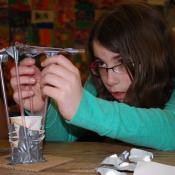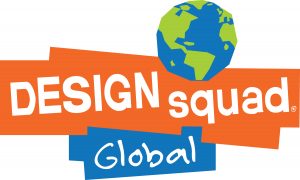Design Squad
Impact
DESIGN SQUAD has exposed millions of middle school youth to hands-on engineering challenges through its Emmy and Peabody Award-Winnning PBS television show and its interactive website. In addition, it has reached more than 250,000 engineers, educators, children and families across the country through face-to-face training and events. Research shows that these programs strengthen students’ grasp of engineering concepts while boosting their enthusiasm for engineering.
Accomplished
- Need Accomplished
- Evaluation Accomplished
- Sustainability Developing
- Replication & Scalability Accomplished
- Partnerships Accomplished
- Capacity Accomplished
- Challenging & Relevant Content Accomplished
- STEM Practices Accomplished
- Inspiration Accomplished
- Under-Represented Groups Accomplished

I know that I’m a better teacher now that we have Design Squad in our curriculum. It just opened their minds and opened their world to what learning is all about.
Teacher, Westlake High School, Westlake, Ohio
Design Principles
The programs in this database clear a high bar. STEMworks reviewed each program against the Design Principles for Effective STEM Philanthropy. Programs must be Accomplished () across all Design Principles, or be Developing (
) in a maximum of three areas.
Overarching Principles
-
Need Accomplished
Identify and target a compelling and well-defined need.
-
Evaluation Accomplished
Use rigorous evaluation to continuously measure and inform progress towards the compelling need identified.
-
Sustainability Developing
Ensure work is sustainable.
-
Replication & Scalability Accomplished
Demonstrate replicability and scalability.
-
Partnerships Accomplished
Create high impact partnerships.
-
Capacity Accomplished
Ensure organizational capacity to achieve goals.
STEM Principles
-
Challenging & Relevant Content Accomplished
Offer challenging and relevant STEM content for the target audience.
-
STEM Practices Accomplished
Incorporate and encourage STEM practices.
-
Inspiration Accomplished
Inspire interest and engagement in STEM.
-
Under-Represented Groups Accomplished
Identify and address the needs of under-represented groups.
Program Overview
DESIGN SQUAD is a multimedia program for middle school-aged children that includes television episodes broadcast nationally on PBS, an interactive website, and hands-on engineering activities. Designed to increase children’s awareness and understanding of engineering, the television series follows two teams of teens as they design and build projects for real world clients. Its spin-off television series, DESIGN SQUAD NATION, showcases engineer co-hosts as they travel across the country, working side by side with teens to turn their dreams into reality through engineering. Online, DESIGN SQUAD provides children with a forum to brainstorm, submit project ideas, and respond to the ideas of others through sketches and prototypes. And offline, DESIGN SQUAD’s 40 hands-on engineering activities enable children to exercise their own design skills, teaching them how to think like engineers.
Funders and Partners
Design Squad has formal partnerships with 90 engineering and education organizations. The project has forged strategic partnerships with seven of these organizations: Project Lead the Way, Girl Scouts of the USA, National Engineers Week Foundation, National Girls Collaborative Project, FIRST, International Technology and Engineering Educators Association, and Association of Science-Technology Centers. Current funding for the project is as follows. Major funding is provided by the National Science Foundation. Project funding is provided by Northrop Grumman Foundation and S.D. Bechtel, Jr. Foundation. Additional funding is provided by United Engineering Foundation (ASCE, ASME, AIChE, IEEE, AIME).
